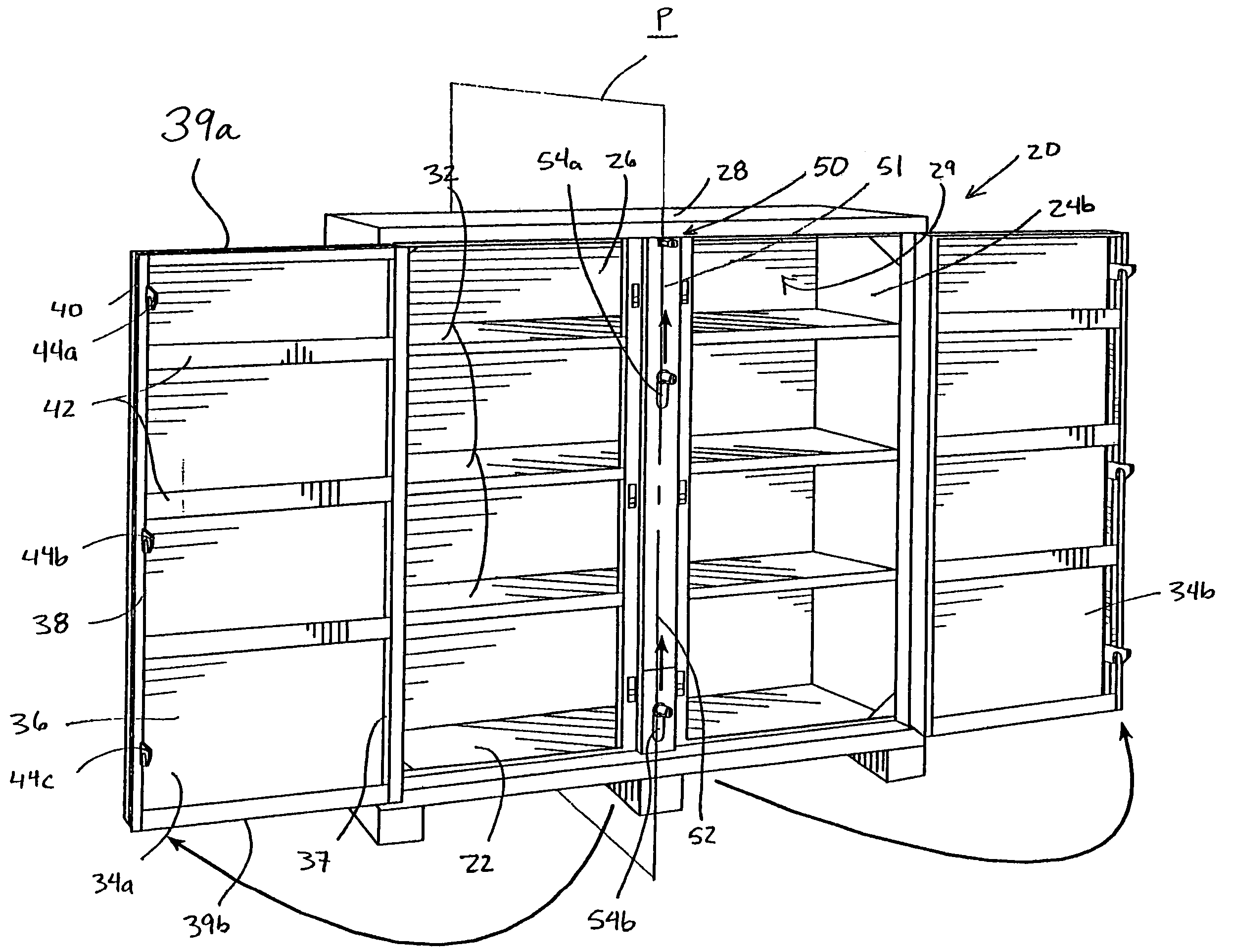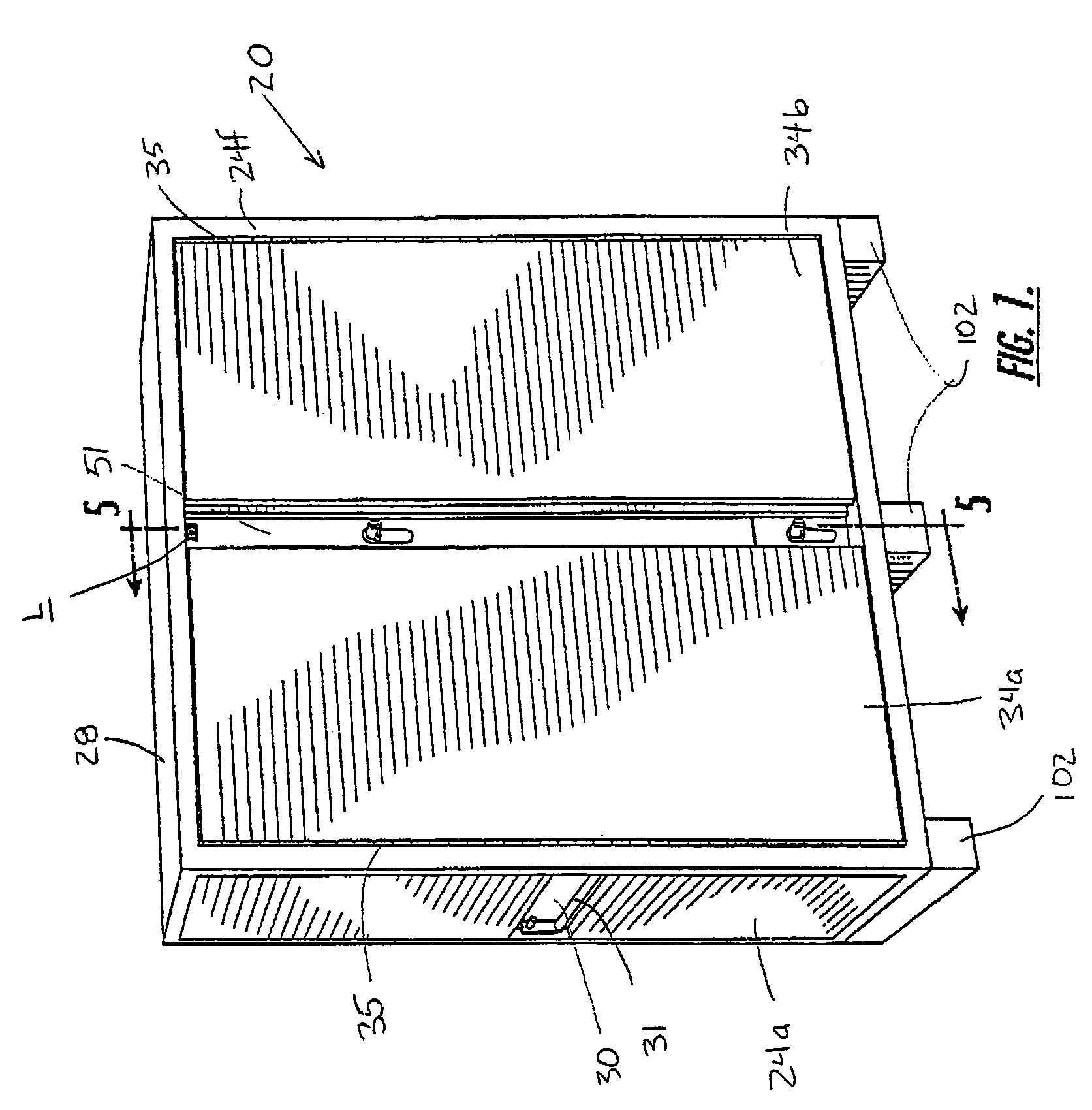Storage cabinet with locking system having dual release members
a locking system and storage cabinet technology, applied in the field of storage cabinets, can solve the problems of inconvenient opening of the cabinet when an operator's hands are full, performance issues of current latching systems, and difficulty in closing and latching the doors, so as to reduce the tendency of the bolster
- Summary
- Abstract
- Description
- Claims
- Application Information
AI Technical Summary
Benefits of technology
Problems solved by technology
Method used
Image
Examples
Embodiment Construction
[0022]The present invention now will be described more fully hereinafter with reference to the accompanying drawings, in which preferred embodiments of the invention are shown and described. This invention may, however, be embodied in many different forms and should not be construed as limited to the embodiments set forth herein; rather, these embodiments are provided so that this disclosure will be thorough and complete, and will fully convey the scope of the invention to those skilled in the art. Like numbers refer to like components throughout. Some layers, thicknesses, and other dimensions may be exaggerated for clarity.
[0023]Turning now to the drawings, a storage cabinet, designated broadly at 20, is illustrated in FIGS. 1-4. The cabinet 20 includes a generally horizontal floor 22 supported by three bolsters 102, two side walls 24a, 24b that rise vertically from opposite lateral edges of the floor 22, a rear wall 26 that rises vertically from the rear edge of the floor 22, and ...
PUM
 Login to View More
Login to View More Abstract
Description
Claims
Application Information
 Login to View More
Login to View More - R&D
- Intellectual Property
- Life Sciences
- Materials
- Tech Scout
- Unparalleled Data Quality
- Higher Quality Content
- 60% Fewer Hallucinations
Browse by: Latest US Patents, China's latest patents, Technical Efficacy Thesaurus, Application Domain, Technology Topic, Popular Technical Reports.
© 2025 PatSnap. All rights reserved.Legal|Privacy policy|Modern Slavery Act Transparency Statement|Sitemap|About US| Contact US: help@patsnap.com



